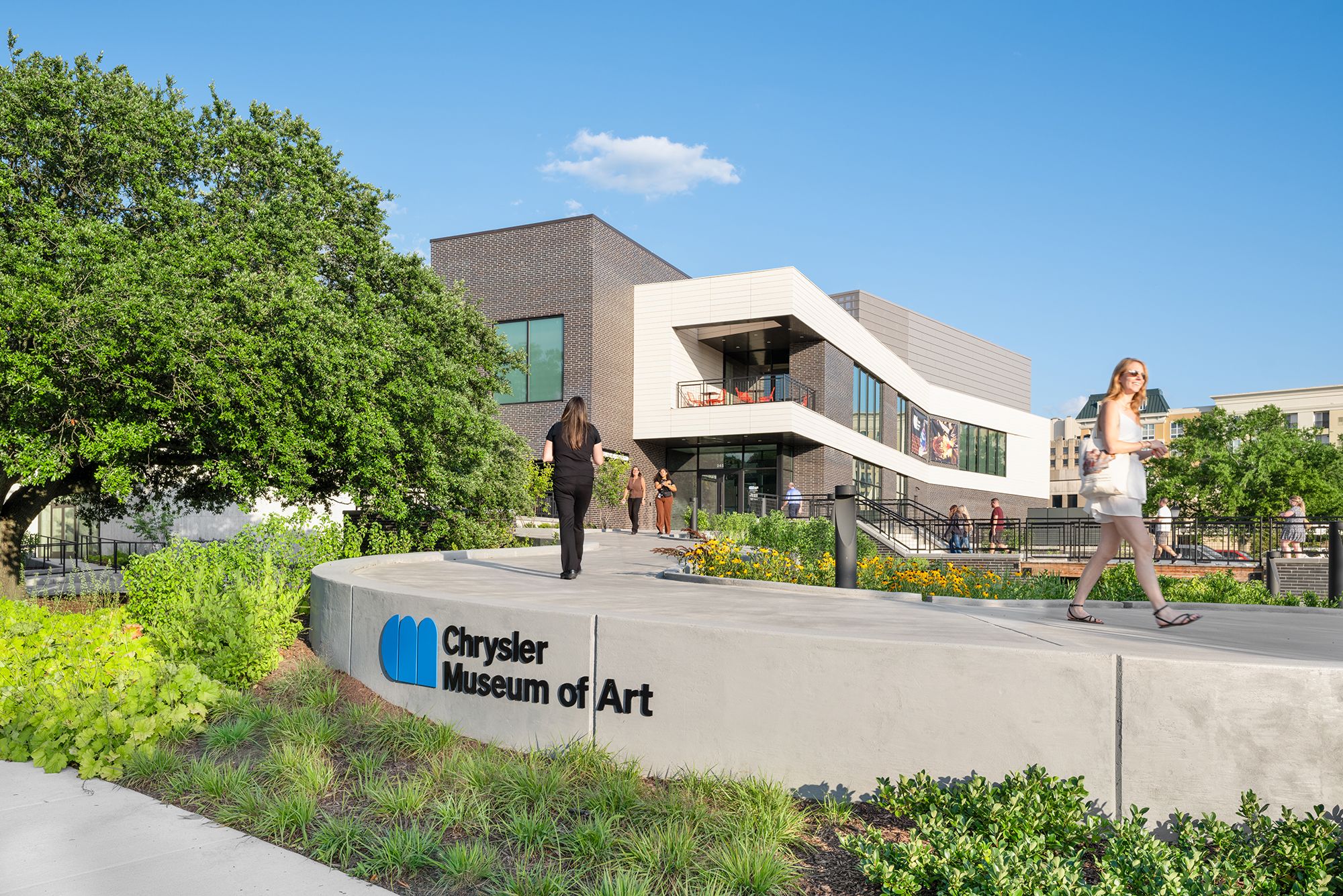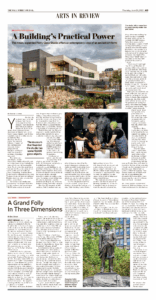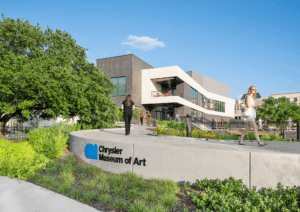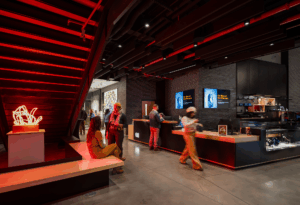The Wall Street Journal Spotlights the Perry Glass Studio’s Purpose-Driven Design



The expansion of the Chrysler Museum of Art’s Perry Glass Studio — designed by Work Program Architects — was recently featured in The Wall Street Journal in a glowing critique by architecture critic Michael J. Lewis. The piece, titled “The Perry Glass Studio’s Practical Power,” explores how the newly completed 24,000-square-foot expansion provides a different kind of experience to visitors.
The new studio is the latest step into glass art for a museum that knows the art form well — the Chrysler’s glass art collection spans over 10,000 objects and 3,000 years. As Lewis notes, the studio was designed for hands-on learning and public demonstration, reflecting a broader shift in museum culture, from passive viewing to active engagement. Its layout and features, writes Lewis, make the selected works on display “more comprehensible, even urgent.”
The article tracks the evolution of the building’s design. The Perry was originally envisioned as a glass-clad structure, but plans changed once the team confronted a core challenge of glassmaking: the need for stable, controlled lighting to monitor the subtle color changes in molten glass. Lewis paraphrases lead architect Rob Crawshaw while noting that the design evolved into a “straightforward, smoothly functioning workshop,” rather than a self-referential architectural statement.
Constructed from dark brick and light terracotta, the two-story building is elevated on a planted terrace to address site-level flooding. Its entrance is angled toward the main Chrysler building across the street, a subtle alignment that Lewis describes as a “genuflection” toward the museum, quoting Crawshaw. Inside, the central feature is a black-box theater hot shop with seating for 200, designed for both production and public demonstration.

Material choices reflect the studio’s industrial function. Exposed concrete floors, brick walls, and unfinished ceilings contribute to a space focused on making rather than display. Acoustic challenges were addressed through targeted sound-absorbing materials, allowing instruction to remain intelligible despite the constant roar of the furnaces.
Lewis concludes that the Perry Glass Studio succeeds as a highly effective and thoughtfully designed tool for education, production, and interpretation — helping visitors connect the physical act of glassblowing with the finished objects on display across the street.
Read the full article in The Wall Street Journal here.
art, Chrysler Museum of Art, glass, norfolk, Perry Glass Studio